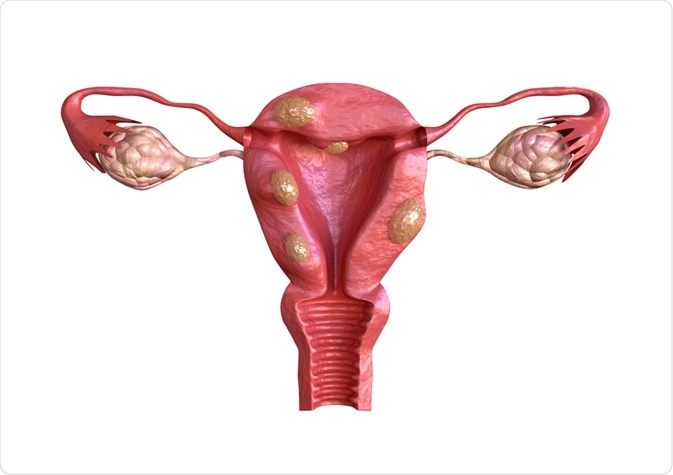Uterine fibroids are benign tumors that are not likely to lead to malignant cancer. Approximately 70% of women have these benign tumors by the time they reach the age of 50 but these women are not believed to be at an increased risk of malignant cancer. However, in rare cases, a malignant fibroid may develop, which is referred to as leiomyosarcoma or uterine sarcoma.
 Image Credit: Adao/Shutterstock.com
Image Credit: Adao/Shutterstock.com
Current scientific research does not suggest that the presence of benign uterine fibroids places an individual woman at greater risk of developing malignant fibroids. The two conditions are viewed separately and it is unlikely that benign tumors may later become malignant.
Prevalence of uterine fibroids
Although benign uterine fibroids are common, with a lifetime risk of more than 70% for the average woman, uterine sarcoma is a rare condition. Previous studies have shown that it affects 3 to 7 per 100,000 women in the United States.
Women of ethnicity with darker skin have a higher risk of malignant uterine fibroids than other populations, with an incidence of the condition twice that of other races.
Types of uterine fibroids
There are several different types of malignant uterine fibroids, which are each characterized by unique properties. These types include:
- Leiomyoma with vascular invasion, which involves the invasion of a common fibroid into a blood vessel. There is no chance of recurrence with this type.
- Intravenous leiomyomatosis involves the growth of tumors within the veins, which originate from uterine fibroids. This has the potential to be fatal, particularly if the heart is involved.
- Benign metastasizing leiomyoma refers to the growth of fibroids in sites external of the uterus, such as the lungs and lymph nodes. If there is the involvement of the pulmonary system, this is more serious with the potential to be fatal.
Diagnosis of uterine fibroids
Diagnosis of malignant uterine fibroids involves a series of tests and examinations. Initially, watchful waiting is usually employed with frequent pelvic examinations to monitor the tumor growth.
Surgery may be indicated to confirm the diagnosis, including taking a biopsy of the affected cells to be tested for abnormal growth in a laboratory setting.
Magnetic resonance imaging (MRI) scans can also be used in combination with an LDH blood test to diagnose the condition. This involves the injection of a liquid dye into a vein and images to be taken approximately 1 minute later, which will highlight the presence of sarcoma on the MRI. The blood test identifies increased levels of LDH iso-enzyme 3, which is produced by sarcomas. Both of these tests should indicate abnormalities for diagnosis to be made.
Uterine Fibroids, Causes, Signs and Symptoms, Diagnosis and Treatment.
Prognosis of uterine fibroids
The prognosis for uterine sarcoma depends on the stage of cancer and the degree of spread throughout the body.
- For women with malignant tumors that are localized to the uterus area, the 5-year survival rate is 63%.
- For women with malignant tumors in the pelvic region, including those outside of the uterus, the 5-year survival rate is 36%.
- For women with distant metastases, such as those in the heart or the lungs, the 5-year survival rate is 14%.
In comparison to other types of cancer, the prognosis of uterine sarcoma is not positive.
A significantly improved prognosis is observed when the treatment plan of a woman with malignancy includes both surgery and radiotherapy, in contrast to surgery alone. As such, adjuvant radiotherapy should be recommended to patients to improve the survival rate.
References
Further Reading